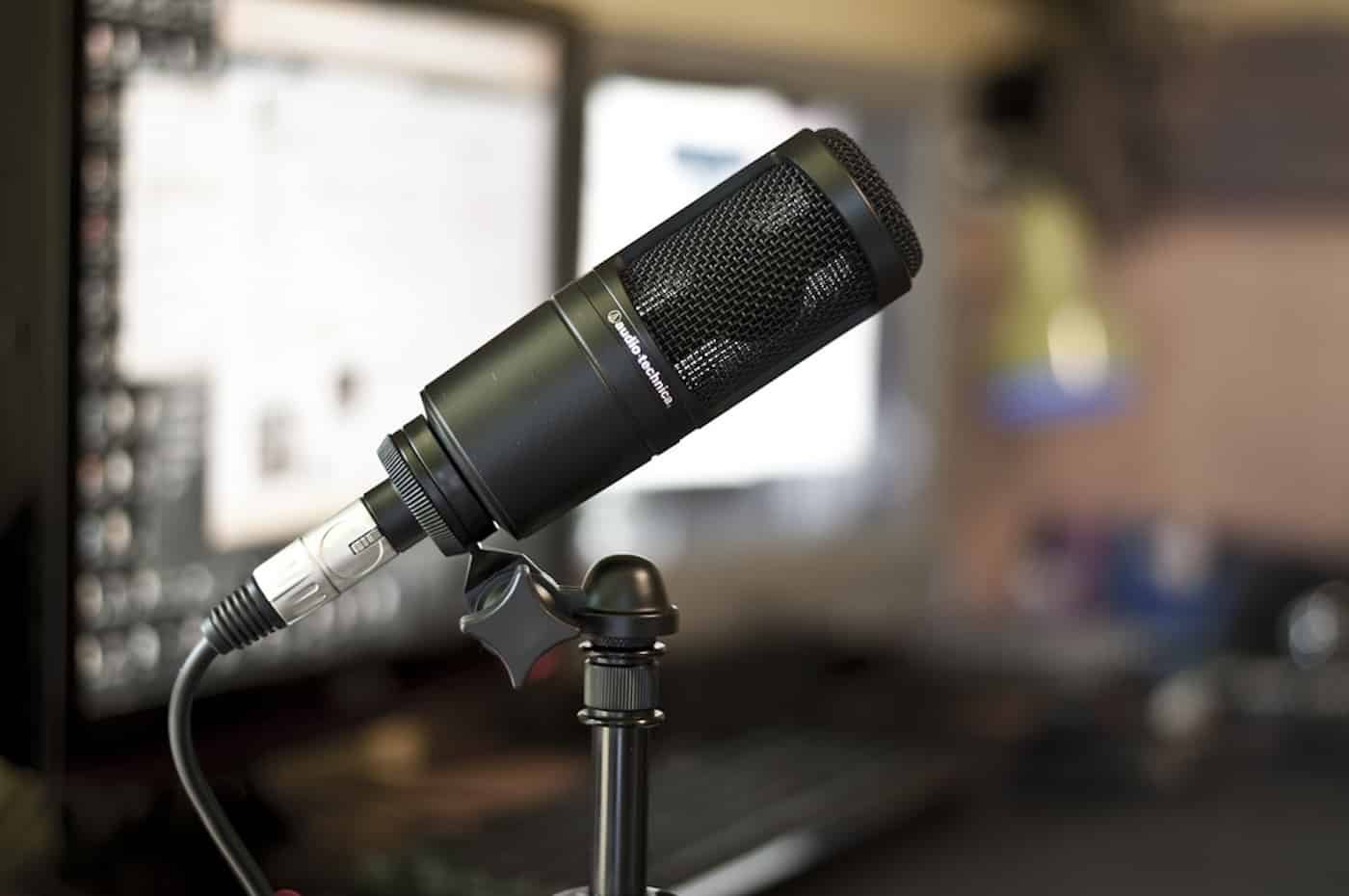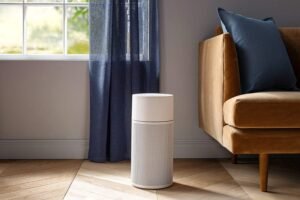
This is the review of the comparison between two microphones from two different brands. The comparison here is between the Blue Snowball and the Audio-Technica AT2020. There are differences in their price range as well as in their features and performances. To know which one sounds better than the other, go to the detailed review.
 |  |
| Blue Snowball | Audio-Technica AT2020 |
| BUY NOW | BUY NOW |
| PROS | PROS |
| Needs no drivers for Mac OS X or Windows XP. Extremely sturdy and stylish. Good quality recordings. Table-top stand included. Simple to use. | Good sound on vocals and instruments. Extremely versatile and can be used for just about anything. The authentic dynamic response captures the nuances of a recording. |
| CONS | CONS |
| The lack of gain adjustment (other than a pad) means you need to work close to the mic to get a high enough recording level. Distant subjects not very well resolved. | Noise level slightly higher than average. Only features a cardioid polar pattern. |
SPECIFICATIONS:
| HEADER | BLUE SNOWBALL | AUDIO-TECHNICA AT2020 |
| Brand | Blue Microphones | Audio-Technica |
| Product Line | Blue Microphones Snowball | Audio-Technica |
| Model | AT2020 | |
| GENERAL | BLUE SNOWBALL | AUDIO-TECHNICA AT2020 |
| Manufacturer | Logitech | Audio-Technica |
| Recommended Use | computer, portable electronics | Professional audio |
| MICROPHONE | BLUE SNOWBALL | AUDIO-TECHNICA AT2020 |
| Microphone Technology | condenser | condenser |
| Microphone Operation Mode | cardioid, omni-directional | cardioid |
| Sensitivity | -37 db | |
| Microphone Power Source Voultage (DC) | 48 V | |
| Frequency Response | 40 Hz | 20 Hz |
| Signal-To-Noise Ratio | 74 db | |
| Total Harmonic Distortion (THD) | ||
| Max Sound Pressure | 144 db | |
| Audio Input Details | Cardioid – 40 – 18000 Hz Omni-directional – 40 – 18000 Hz | cardioid – 20 – 20000 kHz |
| Connectivity Technology | Wired | Wired |
| AUDIO SYSTEM | BLUE SNOWBALL | AUDIO-TECHNICA AT2020 |
| Type | Microphone | Microphone |
| Recommended Use | computer, portable electronics | Professional audio |
| Specific Applications | recording, voice | |
| Additional Functions | ||
| Controls | ||
| DIMENSIONS & WEIGHT | BLUE SNOWBALL | AUDIO-TECHNICA AT2020 |
| Component | ||
| Width | 4.88 in | 2 in |
| Depth | 7.88 in | 2 in |
| Height | 10 in | 6.4 in |
| Weight | 16.22 oz | 12.17 oz |
| FEATURES | BLUE SNOWBALL | AUDIO-TECHNICA AT2020 |
| Features | Unique two-condenser-capsule design for capturing vocals, music, podcasts, gaming and more. Cardioid, omni, and cardioid with pad pickup options. Includes fully adjustable metal mic stand and USB cable. Plug and play with Mac and PC. Available in textured white, gloss black and chrome. | Custom-engineered low-mass diaphragm provides extended frequency response and superior transient response. The price/performance standard in side address studio condenser microphone technology. Cardioid polar pattern reduces pickup of sounds from the sides and rear, improving isolation of desired sound source. High spl handling and wide dynamic range provide unmatched versatility. |
Detail Review:
INTRODUCTION:
Blue Snowball
The Blue Snowball is one of the best and popular microphones selling at a lower price in the market. This microphone is retailing for around fifty to a hundred dollars based on the colors you prefer to choose. This microphone comes with two polar patterns such as the cardioid and the omnidirectional.
Audio-Technica AT2020
The Audio-Technica AT2020 is a very popular microphone that I honestly did not like at first. I thought it sounded incredibly hollow and tiny for what it was but that didn’t last too long. After spending a good amount of time with this microphone I really loved it. This microphone is retailing for around a hundred and fifty dollars.

DESIGN:
Blue Snowball
The build quality of this thing is the only kind of nice, it’s a plastic body and feels kind of cheap there but the actual mic stand feels incredibly nice. I don’t like this because it offers zero shock absorption for the microphone, so you’ll hear a lot of noise when you’re banging on your desk if you end up using this stand that comes with it. There is a ball joint on the microphone that allows you to tilt the microphone maybe 30 or 40 degrees. Then on the back, you have the USB cable, and then directly above that, you have the three-way switch to switch between cardioid which is setting one, cardioid with a 10-decibel pad which decreases the volume by 10 decibels that are setting 2 and then setting 3 on the very end is omnidirectional.
Audio-Technica AT2020
The exterior design of this microphone does consist entirely of metal, and I do mean for the entirety of this build. It’s not going to be that heavy of a microphone at all, and it’s definitely pretty small too especially in comparison to a lot of other XLR mics in the business. But the build is still pretty nice and it’s hefty enough for sure. I don’t really have a lot of complaints about the build at all, and this is a very nice looking microphone too that certainly looks and feels like it is worth the money. You won’t find any switches or anything like that on this microphone but only the XLR port on the bottom, so that is essentially everything that you get with it.

FEATURES:
Blue Snowball
The Blue Snowball is a USB condenser microphone, that has two microphone capsules inside of it. The difference between the Blue Snowball and the Blue Snowball iCE is that the Blue Snowball has two microphone capsules and what those two capsules do is allows this microphone to switch polar patterns from a cardioid polar pattern which basically just picks up audio in front of it, and it allows you to switch to an omnidirectional setting which allows you to speak all the way around the microphone and pick up audio from all 360 degrees. The Blue Snowball iCE does not have the ability to switch or add the omnidirectional setting.
Audio-Technica AT2020
Inside of the box, you will find the microphone itself, the mounting system for it, and the high-quality leather pouch as well as some instructions as per usual. it’s not the nicest unboxing but it is actually pretty good, the padded bag is quite nice. This is a cardioid condenser microphone, and it’s going to be side addressed as well. It’s got a frequency response of 20hz to 20 000 hertz, a sensitivity of negative 37 decibels, and since it is a condenser microphone it is going to require an extra 40 volts of phantom power as well. So, you can’t just use it as it is, you do need to have an interface that can actually power it properly.
It actually does a surprisingly good job at rejecting sounds or at least the sounds you will hear in the background just won’t sound really quite as aggressive as what you might hear from a lot of USB condenser microphones on the other hand. This microphone does a much better job of sound rejection than those even though it is still a condenser microphone. So, this on its own is a pretty big upgrade in that regard and I would consider it a fantastic one for being the kind of microphone that it is.
If you do some EQ with this microphone and the mixer such as raising the compression by around 25% of what this mixer is actually capable of raising in general, and I also raised the highs a little bit, and I raised the lows as well while lowering the mids just a little bit because I thought that it was a little bit too enhanced. In that regard, you do get a brighter nicer sound in my opinion, that does still sound suitable for broadcast purposes and that does suit people with deeper voices such as myself a little bit better than what I was getting before, and this is just with pretty basic EQ. You don’t have to do too much in order to get a decent sound out of this that can work with your voice. I’m fairly happy with the sounds coming from it thus far.
As far as complaints, I actually don’t have that many but they still exist and are important to mention. I do still hear that thinness coming from this microphone which I don’t immediately love, and for me, it’s not the most flattering sound, at least when used with my own voice. So, for me, an EQ is necessary to get a great sound out of it which means more expensive hardware to make the most out of it, and that is just worth noting. The other thing that this microphone has that really bothers me is that this microphone does very poorly in regards to plosives from my experience at least. Even with a pop filter from a normal speaking distance and you can still hear some rather aggressive blow subs when you speak into it, and when you mention any p’s or any b’s or anything like that, though it happens more.

PERFORMANCE:
Blue Snowball
Honestly, I don’t think the Omni setting is usable at all, the only thing I could imagine it being used for is if you’re recording a conference or a meeting, and you’re just going to use it to listen back later, and you’re not going to release it, or maybe if you have a band and you’re just sitting in a room and you want to get a rough demo out for pre-production or something like that. But as far as releasable audio, I don’t think the omnidirectional polar pattern setting on this can be used. The cardioid on the other hand sounds pretty decent, it’s nothing amazing it’s not gonna be CD-quality audio, or just blow people’s minds. It’s a $60 microphone and it sounds like a $60 microphone.
Audio-Technica AT2020
I would describe the sounds coming from this microphone as still being a little bit thin for the most part but on its own, it does still sound pretty good without any boost whatsoever beyond what it’s actually needed for it to work. When there is a big and loud AC in the room, you will definitely still hear some sound, not as a whisper but more aggressively or like there’s an actual air conditioner in the room. But this is a condenser microphone after all, so it is also expected really. It is always best that you record in a sound-treated room when using a condenser microphone regardless.

WHICH ONE SOUNDS BETTER?
The Audio-Technica AT2020 sounds pretty good for the money, and but you do need a quality interface that can supply enough power to this microphone but you don’t specifically need a mixer because you can make the changes in a post using something like Audacity or something like that, you don’t necessarily need hardware to make those changes in the sound work, or to use any kind of equalizer. If you can’t spend 150 dollars on a microphone then you can choose the Blue Snowball too because the Snowball also sounds good for the price. But still, comparatively the AT2020 sounds better than the Audio-Technical AT2020.
Expert Reviews of Blue Snowball:
By Sound On Sound
Though subject to certain technical limitations, the Snowball works well for close-up vocals or speech, while the pattern switching system gives a choice of two very usable tonalities. The inclusion of a pad switch means that it may also be used for recording louder sources, such as guitar combos or percussion.By cnet
At this price, you’ll have a hard time finding a better-sounding, better-looking, or more easy-to-use microphone for your computer. Just don’t expect the Blue Microphones Snowball to replace a studio’s worth of recording gear.By Tech Radar
A switch on the back lets you select one of three operating modes, where the twin capsules within can be set to receive sound in a standard cardioid pattern (for close-up vocals), cardioid with a -10dB pad…By the podcast host
The Snowball and I will never be best friends, but I have a lot more respect for it than I did previously. It’s an affordable mic, very easy to set up and use, and it sounds fine for recording spoken word content. In terms of an entry-level mic…By the streaming blog
The Blue Snowball microphone is a multipurpose device but it holds the distinction of being a really good microphone for recording lectures and more. It’s a pretty basic mic but it’s great that the Snowball covers all the important…Expert Reviews of Audio-Technica AT2020:
By Sound On Sound
As a low-cost, general-purpose capacitor microphone, the AT2020 is hard to fault other than on account of its noise level. I particularly liked the well-balanced sound this microphone produced, both on voice and on acoustic…By old-time music
We don’t need to spend too much time discussing the positive points of the Audio-Technica 2020, because we have already highlighted so many. Also, we have already discussed that at this price point, it represents great value. It may…By MusicCritic
It is a sensibly priced microphone for a low-budget set-up. It has an airy sound and captures good clean vocal takes. It has a smooth, crisp, and well-balanced dynamic…By IGN
The AT2020 delivers super audio but requires more parts to get up and running than a dedicated USB mic. This is for people serious about audio quality, but given the limitations of streaming, the…By Gearank
The Audio-Technica AT2020 is an ideal budget-friendly condenser mic for home studios that are expanding to capture loud sound sources. It is a great supplementary mic if you already have a large-diaphragm condenser, and…




